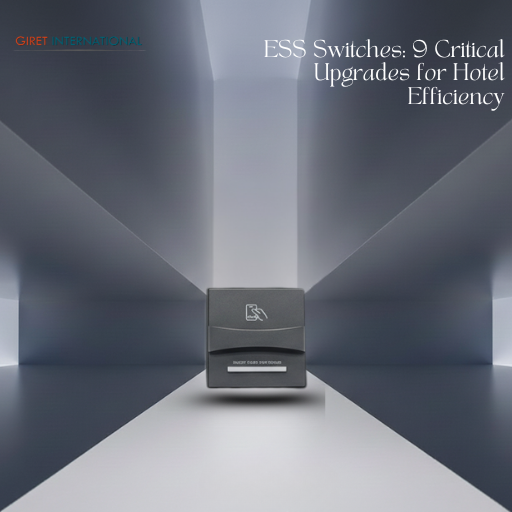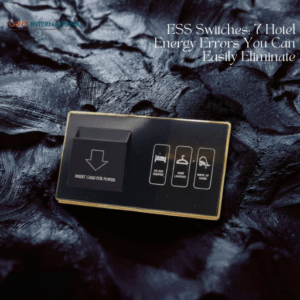Introduction
ESS Switches have emerged as one of the most important safety-driven components inside modern hotel rooms. While many hotel owners install them primarily to address energy expenses, their true value shines in how effectively they prevent accidents, eliminate unnecessary electrical load, and ensure predictable behavior inside every guestroom.
Today’s hospitality industry operates in an environment where reliability, consistency, and risk mitigation matter more than ever. This makes structured automated power control an essential building block of a safe hotel.
Understanding Guest-Room Safety Challenges
Hotels across every category face a common issue: guest behavior is unpredictable. No two visitors treat electrical appliances the same way. This creates a wide range of safety concerns, including:
- Long AC runtime without supervision
- Bathroom lights and heating units running for hours
- Chargers overheating on beds and furniture
- Kettles boiling dry
- Irons forgotten in active mode
- Sockets energized even when rooms are empty
- Children touching unsafe equipment
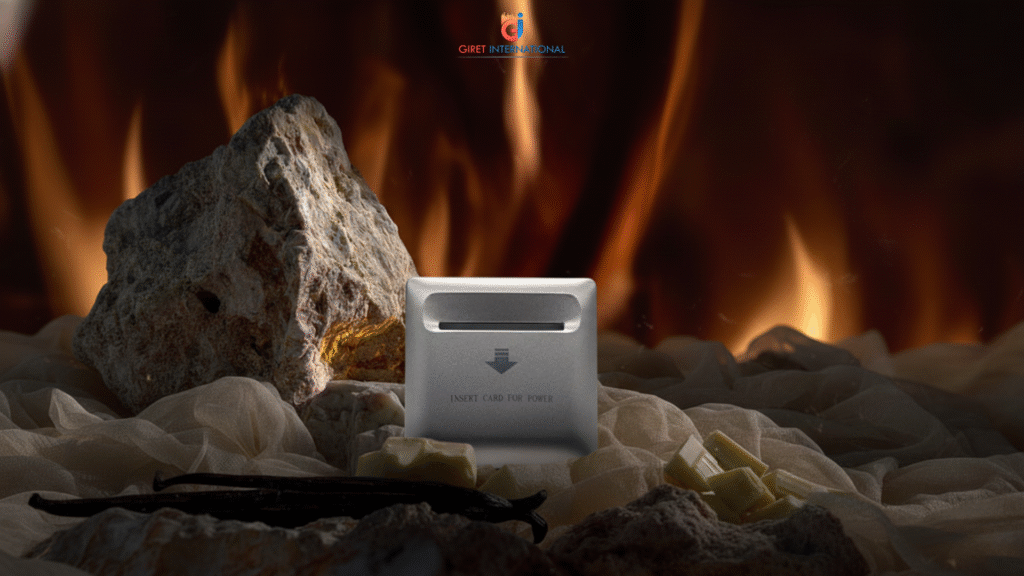
These issues are not caused by a lack of maintenance. They emerge because electrical systems continue running in rooms with no guests present. When power is not tied to occupancy, risk becomes unavoidable.
How ESS Switches Transform Safety Architecture
Hotels require systems that correct unsafe behavior without depending on staff intervention. ESS Switches do exactly that. By connecting power access to RFID or MIFARE keycards, they ensure that all circuits shut down automatically when a guest steps out. This prevents long periods of unattended electrical consumption, stops heat buildup, and removes the possibility of hidden hazards forming behind closed doors.
ESS Switches also bring discipline to rooms by forcing electricity to behave in a predictable manner. When power becomes occupancy-linked, guest rooms follow a controlled pattern rather than fluctuating based on human forgetfulness.
1. Creating Occupancy-Linked Electrical Behavior

The foundation of guest-room safety lies in ensuring that electricity flows only when the space is occupied. ESS Switches enforce this rule every single time a guest enters or leaves. This eliminates guesswork and ensures that hotels rely on automated logic rather than manual checks.
This step alone reduces the majority of safety threats by:
- Cutting power immediately after exit
- Preventing appliance overheating
- Ensuring sockets remain inactive
- Minimizing accidental misuse
Hotels instantly gain a consistent electrical pattern across all rooms.
2. Stopping AC Overload and Heat Stress
Air-conditioning units are the most misused devices inside hotel rooms. Guests frequently lower temperatures to extreme settings, leave the room for hours, and unknowingly force compressors into stressful cycles. Over time, this damages coils, increases wiring temperature, and raises the chance of overheating.
By integrating ESS Switches, hotels stop ACs from running when no one is present. The units return to a safe state automatically, preventing compressor strain and maintaining safer operational temperatures.
3. Eliminating Unattended Device Hazards

Unattended devices are among the most common sources of electrical danger. Kettles left in “on” mode, irons heating on fabric, hairdryers plugged into open sockets, and chargers overheating on soft surfaces all create hazards that can escalate quickly.
Because ESS Switches terminate room power after the guest exits, these risks disappear. Unattended appliances are never left operational long enough to cause harm. This is one of the strongest safety advantages for hotels managing high guest turnover.
4. Ensuring Safer Room Turnover Cycles
Between check-out and housekeeping arrival, guest rooms often remain powered for long periods. Active AC units, glowing lamps, and warm chargers increase the potential for overheating. Correcting these conditions manually is impossible on large properties.
Automated shutdown through ESS Switches ensures every room resets to a safe baseline before staff entry. Housekeeping and engineering teams walk into rooms with zero electrical load, reducing stress and improving workplace safety.
5. Stabilizing Electrical Patterns Across Rooms

Safety is easier to manage when electrical use follows consistent patterns. Hotels that rely completely on guest decisions often experience unpredictable peaks and valleys in power distribution. These unpredictable cycles increase stress on wiring, panels, and breakers.
Integrating ESS Switches provides structure. This stabilizes room-level consumption, reduces sudden load spikes, and improves the long-term reliability of the property’s electrical backbone.
6. Reducing Wiring Stress & Protecting Infrastructure
Behind every hotel wall are kilometers of wiring that silently carry the load of daily operations. The more irregular and extended the load, the faster insulation weakens, joints heat, and breakers fatigue.
Sustained, unattended consumption is the root cause of wiring stress. With ESS Switches preventing long operational periods, wiring remains cooler, safer, and less strained. This significantly reduces fire risks, unexpected outages, and gradual internal damage.
7. Minimizing Fire-Linked Electrical Risks
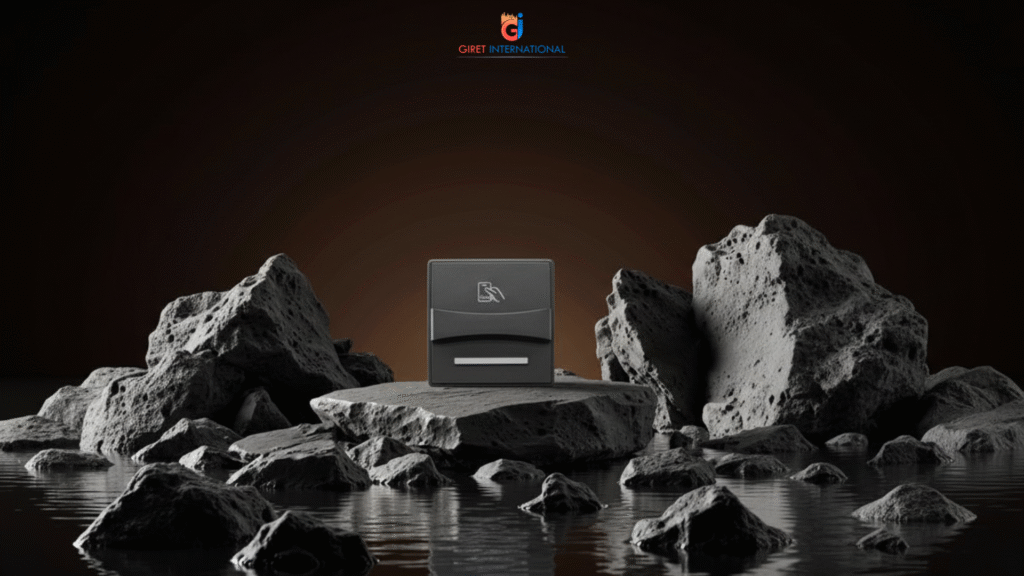
Electrical accidents rarely occur suddenly they build slowly through heat accumulation, prolonged load, and unnoticed device activity. By cutting power during guest absence, ESS Switches eliminate the very conditions that allow sparks, smoldering, and heat pockets to form.
This alone creates a measurable reduction in safety incidents, particularly in older buildings or high-humidity environments where wiring is more vulnerable.
8. Safeguarding On-Floor Hotel Teams
Guest-room safety extends beyond guests. Housekeepers, maintenance staff, and supervisors regularly enter rooms not knowing what electrical conditions await them. A powered-on iron or an active hair dryer presents real danger.
Rooms controlled by ESS Switches are inactive by default, ensuring a safe environment for staff. This reduces injuries, minimizes shock risk, and improves operational confidence during inspections and cleaning cycles.
9. Supporting Compliance & Certification

Safety audits and brand inspections increasingly evaluate how hotels regulate electrical consumption. Modern sustainability and safety certifications emphasize automated control systems to mitigate human error.
When ESS Switches maintain tight control over room electrical behavior, hotels easily meet requirements related to safe load distribution, guest-room automation, and power-saving compliance factors that strengthen both certification scores and insurance evaluations.
Selecting Safe and Reliable Models
Not all models offer the same level of protection. Hotels should evaluate:
- Power rating
- Material durability
- Delay timing accuracy
- Compatibility with access systems
- Heat resistance
- Consistency during peak occupancy
- Ability to integrate with automation
Whether selecting glass-panel versions, durable polycarbonate variants, or heavy-load models, prioritizing safety-first design ensures smoother operations across all room categories. High-quality units complement infrastructure and avoid performance failures on busy days.
Installation Standards That Enhance Safety
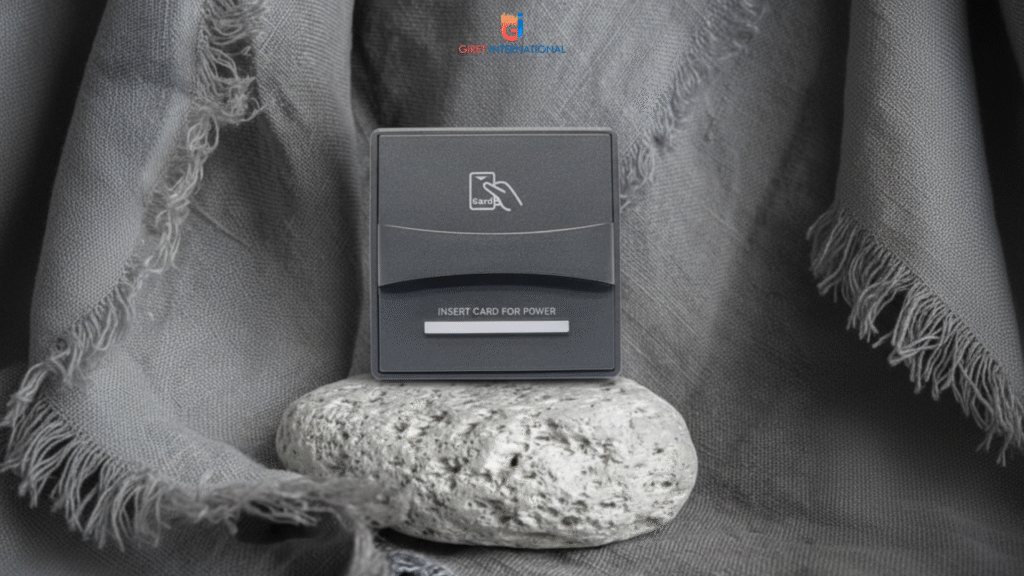
The safest systems require proper installation. Critical steps include:
- Using BIS-certified wiring boxes
- Confirming MIFARE and RFID compatibility
- Ensuring clean neutral and phase separation
- Validating power-off delay settings
- Securing correct amperage support
- Running live tests before room activation
Hotels should adopt installation protocols that align with international standards such as IEC and NFPA recommendations. Proper commissioning ensures the automation system operates exactly as intended.
Real-World Scenarios Demonstrating Safety Gains
Scenario 1: Coastal Resort Avoids AC Overheating
Rooms previously ran AC units for hours after guests left for the beach. After automation, compressor temperature stabilized and overheating incidents disappeared.
Scenario 2: Business Hotel Prevents Charger Meltdown
A guest left multiple devices plugged in overnight. Auto-shutdown prevented a charging adapter from reaching unsafe heat levels.
Scenario 3: Family Suite Reduces Child-Related Hazards
Young children often touch sockets out of curiosity. Thanks to room deactivation, sockets stayed inactive when families stepped out.
Scenario 4: Older Hotel Experiences Fewer Breaker Trips
Aging wiring was prone to overload. Automated shutdown reduced electrical stress and eliminated unpredictable breaker failures.
These examples illustrate the practical impact of structured electrical control less risk, fewer emergencies, and greater operational peace.
Conclusion

Hotels thrive on reliability, safety, and guest trust. While luxury features attract attention, the invisible systems that maintain safety are what protect a hotel’s reputation over the long term. Automated occupancy-linked control ensures that rooms remain free of electrical hazards, appliances stay within safe usage limits, and infrastructure ages more gracefully.
By embedding intelligent power behavior into everyday operations, hotels create a safer experience for guests, staff, and the building itself. ESS Switches are not simply devices they are part of a stronger safety culture. When combined with proper installation, thoughtful model selection, and consistent maintenance, they elevate the safety performance of any property.
➡ About Giret International
➡ Contact Us
➡ Hospitality Products
Instagram | Facebook | Pinterest | YouTube | X (Twitter)

